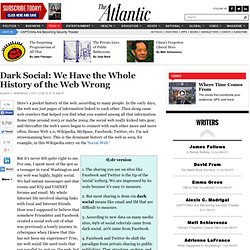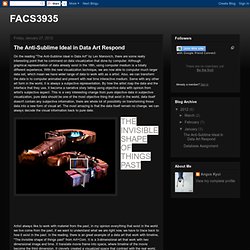

“Raw Data” is an Oxymoron. We live in the era of Big Data, with storage and transmission capacity measured not just in terabytes but in petabytes. Data collection is constant and even insidious, with every click and every “like” stored somewhere for something. This edited collection seeks to remind us that data is anything but “raw”, that we shouldn’t think of data as a natural resource but as a cultural one that needs to be generated, protected, and interpreted. Niccolò Tempini finds that all of the matters discussed in this book are as inherently political as they are urgent.
“Raw Data” is an Oxymoron. Lisa Gitelman (ed.). Find this book: Edited by NYU media historian Lisa Gitelman , this book is a stimulating and useful collection of essays which characterize practices at the heart of the increasingly data-centric society in which we live. Newspapers and the business world are abuzz about the data revolution. So what are the lessons that the volume teaches us? socialmedia.hpc.unm.edu/isea2012/sites/default/files/ISEA2012_confproceedings_WEB.pdf.
P R I S M. Chris Sugrue. Dark Social: We Have the Whole History of the Web Wrong - Alexis C. Madrigal. Here's a pocket history of the web, according to many people.

In the early days, the web was just pages of information linked to each other. Then along came web crawlers that helped you find what you wanted among all that information. Some time around 2003 or maybe 2004, the social web really kicked into gear, and thereafter the web's users began to connect with each other more and more often. Hence Web 2.0, Wikipedia, MySpace, Facebook, Twitter, etc. I'm not strawmanning here. Tl;dr version 1. 2. 3. 4. But it's never felt quite right to me. To be honest, this was a very difficult thing to measure. There are circumstances, however, when there is no referrer data. This means that this vast trove of social traffic is essentially invisible to most analytics programs.
Nonetheless, the idea that "social networks" and "social media" sites created a social web is pervasive. Everyone else had data to back them up. Just look at that graph. DATA!!!!!!!!!! FACS3935: The Anti-Sublime Ideal in Data Art Respond. On the reading "The Anti-Sublime Ideal in Data Art" by Lev Manovich, there are some really interesting point that he command on data visualization that done by computer.

Although graphical representation of data already exist in the 18th, using computer medium is a totally different experience. With the new visualization technique, we are now able to computer much larger data set, which mean we have wider range of data to work with as a artist. Also, we can transform the data in to computer animated and present with real time interactive medium. Same with any other art form in the world, it is always a subjective representation. By how the artist map the data and the interface that they use, it become a narrative story telling using objective data with opinion from artist's subjective aspect.